Learn about how the Klondike gold rush changed Seattle forever.
The Klondike Gold Rush Museum is located in Seattle's historic Pioneer Square district, south of Seattle's downtown.
There's two floors of exhibits and a cinema, explaining this fascinating time during Seattle's history.
Learn what kicked off the 1897 Gold Rush in Seattle, and how Seattle businesses boomed as prospectors loaded up on supplies before traveling to Alaska.
The Klondike Gold Rush Museum is located at 319 2nd Avenue S. Check hours (admission is free).
10 things to see at Klondike Gold Rush Museum
1. The Gold Rush kicked off in Seattle, with the arrival of a ship laden with gold.
The Gold Rush started with the arrival of the SS Portland ship in Seattle in 1897, laden with gold!
The ship set off a frenzy when it docked in Seattle with a cargo of gold from the Klondike region in Canada, with 68 rich miners onboard. Three days earlier the SS Excelsior had arrived in San Francisco from the Klondike also laden with gold.
.jpg)
2. Seattle's depression of the 1890s was soon over.
Seattle's economy was in a nation-wide depression in the 1890's, after the stock market collapse.
This all changed with the arrival of the SS Portland on July 17, 1897 laden with $700,000 worth of gold. There's a huge vintage photo of this ship near the stairs at the Klondike Gold Rush Museum.

3. Roughly 70,000 prospectors passed through Seattle on their way to the gold fields in Alaska.
News spread quickly, setting off a gold rush where an estimated 70,000 prospectors passed through Seattle on their way to the Klondike region. The Klondike Gold Rush Museum has some of the original news clippings. Gold! Gold! Gold!
.jpg)
4. Seattle became a boom town, and suppliers made a fortune from selling to the stampeders.
The Klondike Gold Rush Museum has recreated the shops of some of these earlier suppliers, giving you a feel for this era. Stroll through the Palmer Brothers General Outfitters, and figure out what prospectors needed to take with them to the gold fields.
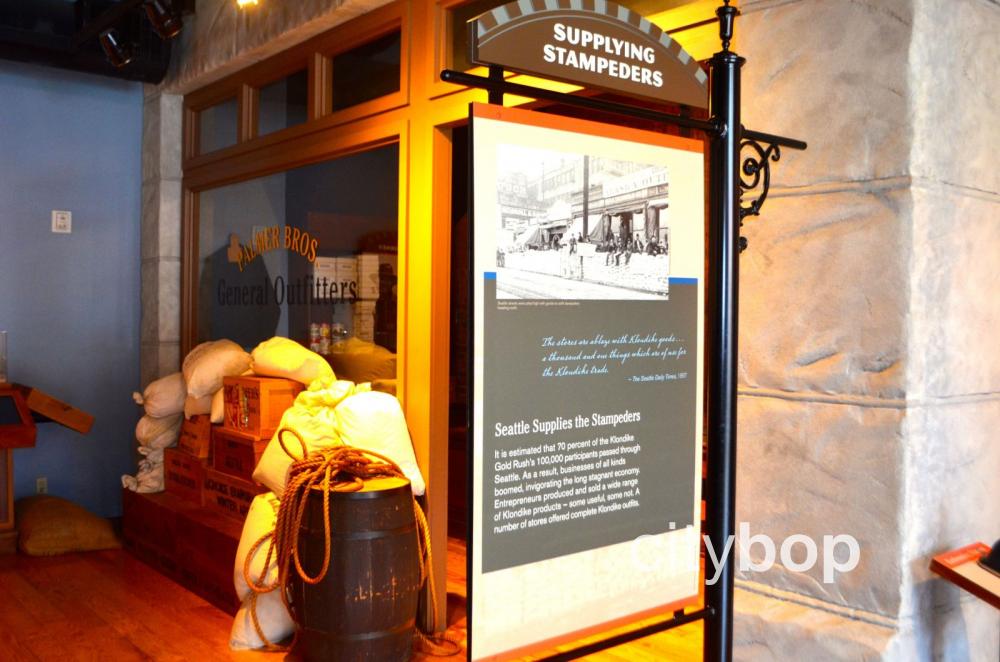
Seattle businesses took advantage of this stampede, by providing prospectors with supplies, like outfits, tents, food and more.
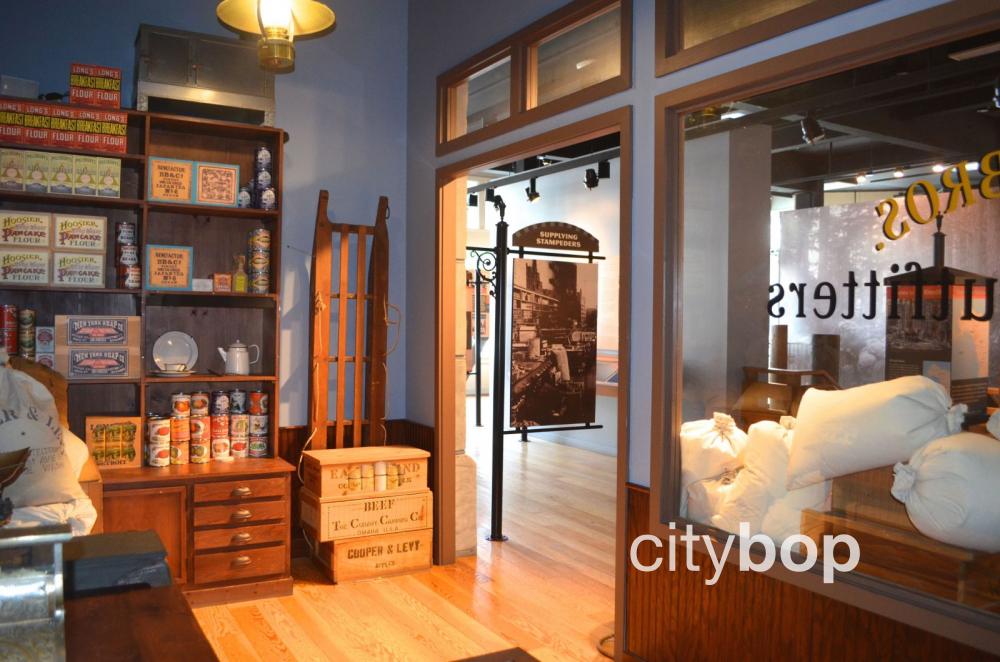
5. Seattle was cleverly marketed as the "Gateway to the Klondike".
Seattle's economy sprung to life, as it was marketed as the "Gateway to the Klondike" by visionary Erastus Brainerd. Brainerd was head of the Bureau of Information, and put Seattle on the map by running print and viral marketing campaigns.
He produced the "Klondike Edition" insert for newspapers to promote Seattle, and asked citizens to write letters to relatives out East. You can see a copy of the Klondike Edition at the Klondike Gold Rush Museum.

6. Everyone got swept up in gold fever!
Seattle went Klondike crazy, and lost many city employees. Fireman, engineers and even the mayor all left their jobs, in search of vast riches up north.
7. The journey to the gold fields from Seattle was incredibly difficult.
The Klondike Gold Rush Museum documents the difficult journey to get to the Klondike gold fields. The prospectors first traveled north up the Inside Passage on steamers, then crossed east through the Coastal Range on foot.
Their journey ground to a halt during the winter of 1897/1898 when prospectors were forced to set up camp at Canada's Lake Lindeman or Lake Bennett until the rivers unfroze (see photo below).
The museum has an exhibit about how one legendary women, Ethel Anderson, made the trip with three children. One of her children was a baby, so she must've been tough as nails!
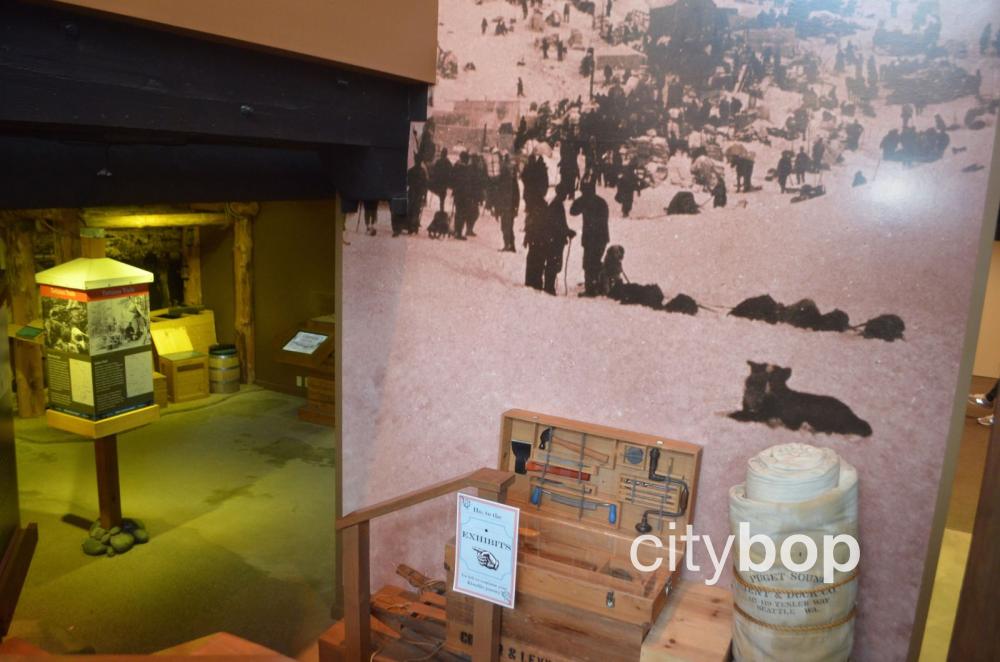
8. There were 150 shipwrecks on the way to the gold fields.
In the spring of 1898 there were over 150 shipwrecks, as the first prospectors made their way 468 miles north up the rivers to Dawson City.
9. The living conditions at the gold fields were terrible.
Those who made it to the gold fields endured awful living conditions, and most never found gold.
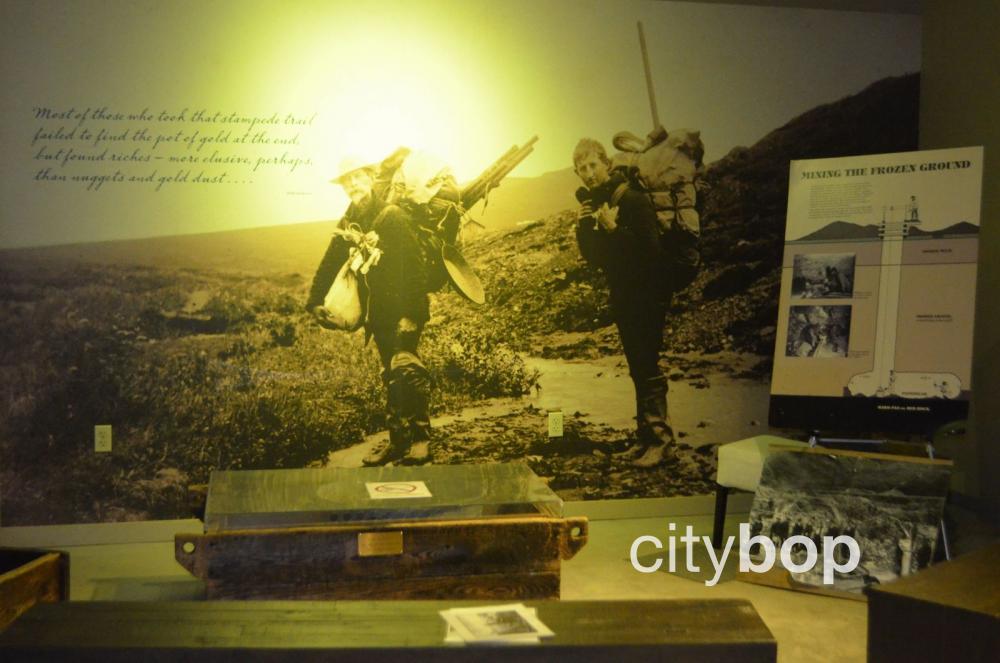
10. Most gold prospectors were unsuccessful.
The odds of making any really good money were 0.3%.
It's estimated that 100,000 people left for the Klondike, approximately 40,000 reached it, 20,000 worked claims, and only 300 made more than $15,000 in gold (the equivalent of $330,000 in 2005).
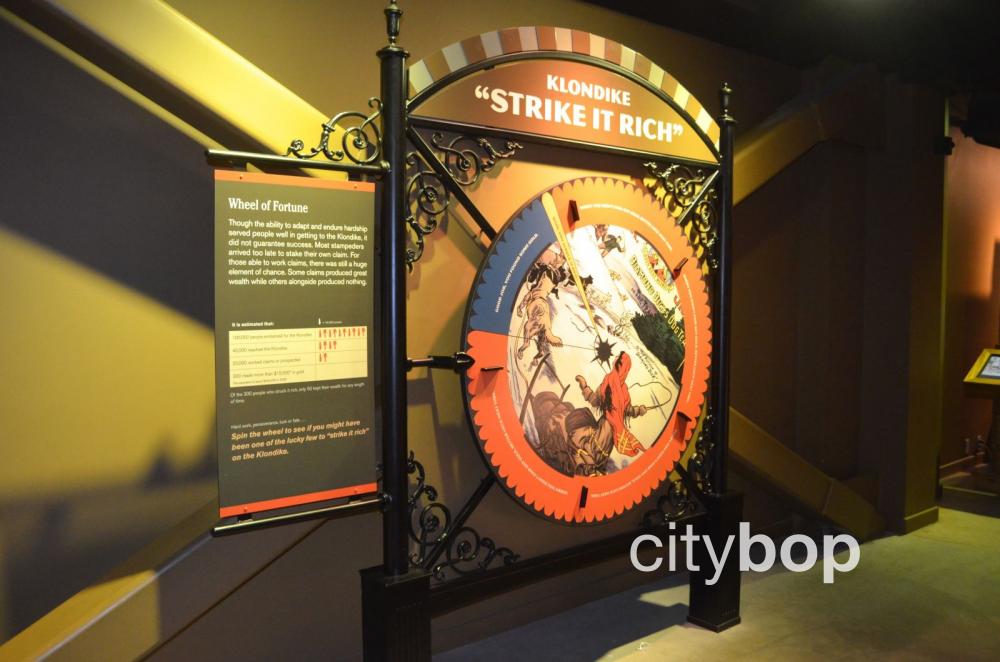
Spin the Wheel of Fortune at the Klondike Gold Rush Museum, to see how lucky you would've been at the Klondike.
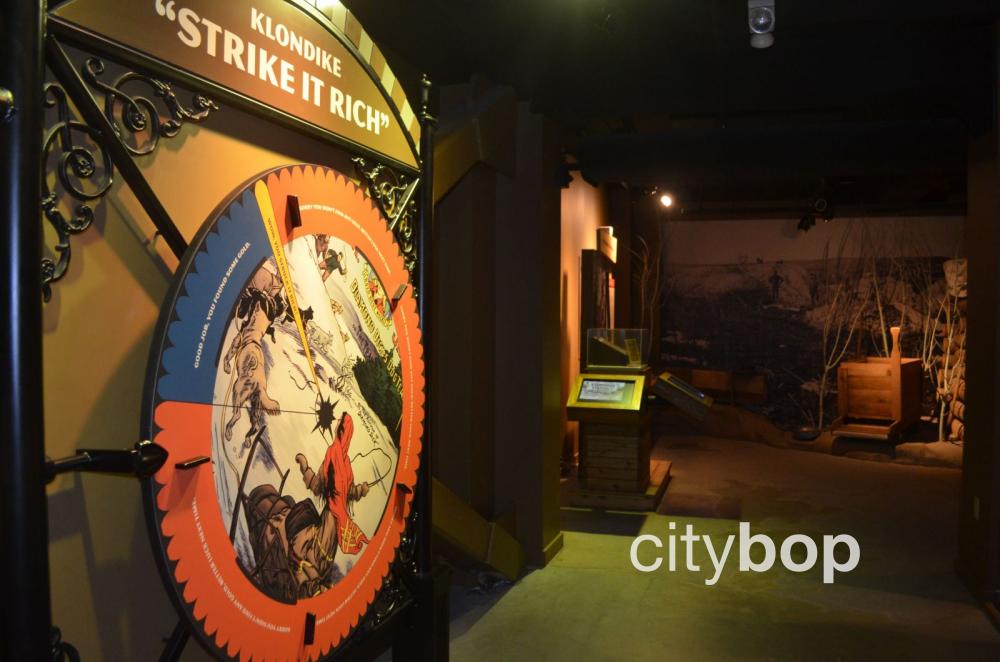
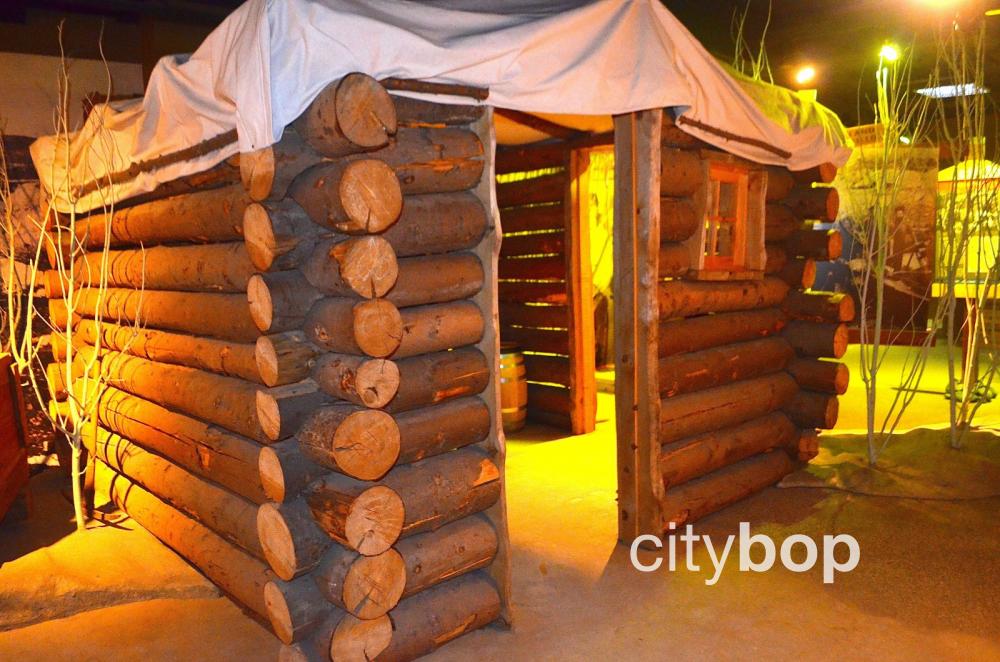
Here's a cabin at the gold fields, but most people would've lived in tents.

Know before you go
- Klondike Gold Rush Museum admission: FREE.
- Hours: check here.
- Parking: paid on-street parking.
- Address: 319 2nd Avenue S, Seattle, WA 89104.
Things to do near the Klondike Gold Rush Museum.
If you're a history buff, book a ticket for the Bill Speidel Underground Tour in Pioneer Square. Get guaranteed laughs as you hear about Seattle's colorful history.
The Wing Luke Museum is a few blocks away in China Town, and provides fascinating insight into the Asian immigrant experience in Seattle.
Fancy some great views of Seattle? Visit the observation decks at either the Smith Tower in Pioneer Square, or Columbia Tower a few blocks away in downtown.
If you need some relaxation after all this sight-seeing, stop at the UPS Waterfall Garden Park in the Pioneer Square district.
Other cultural museums in Seattle.
Both the Nordic Museum in the Seattle neighborhood of Ballard, and the MOHAI just north of downtown, provide fascinating exhibits on Seattle's history.
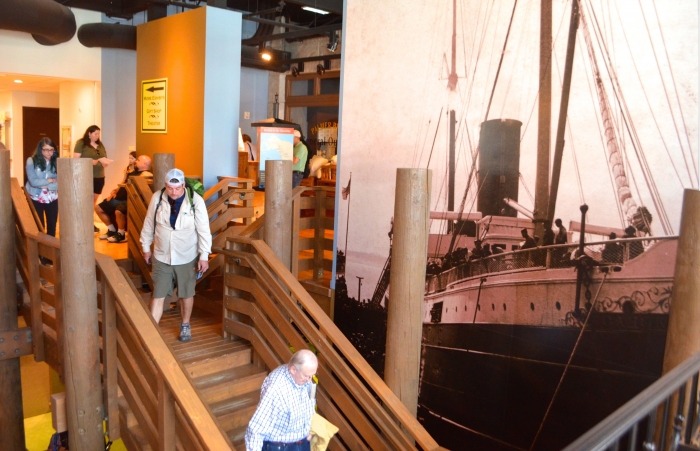
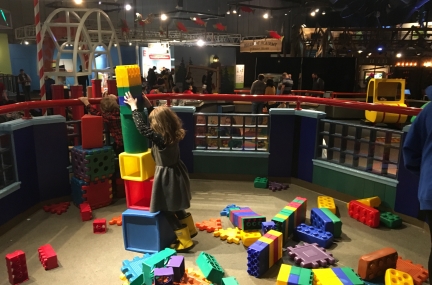


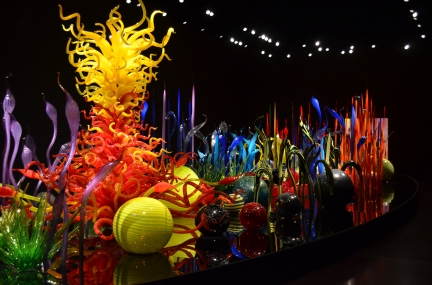

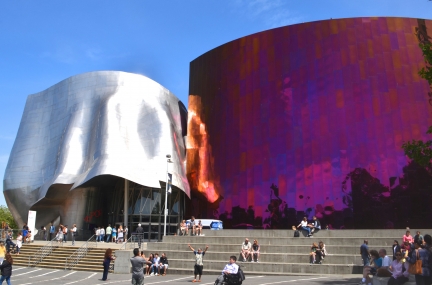

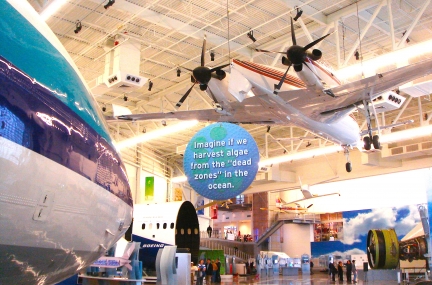
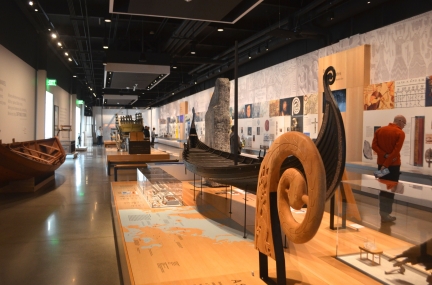
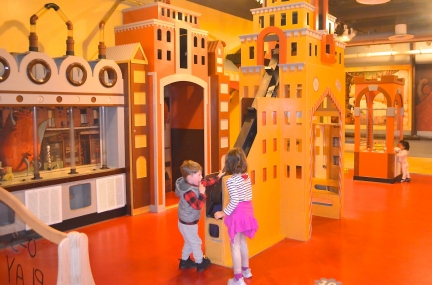
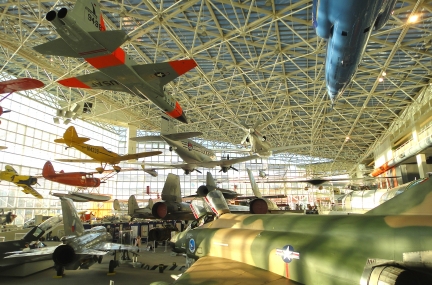
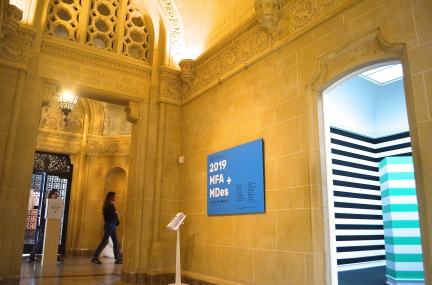
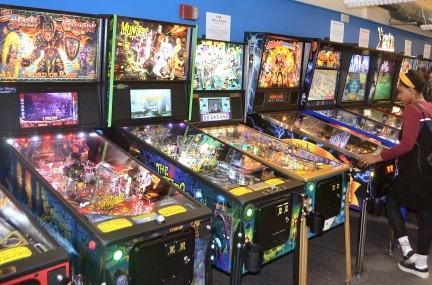
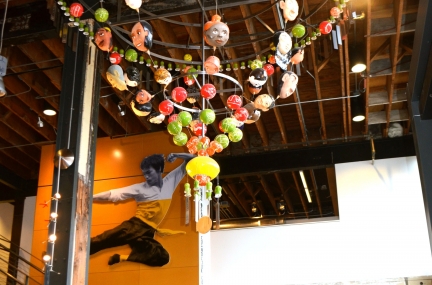
Review this attraction